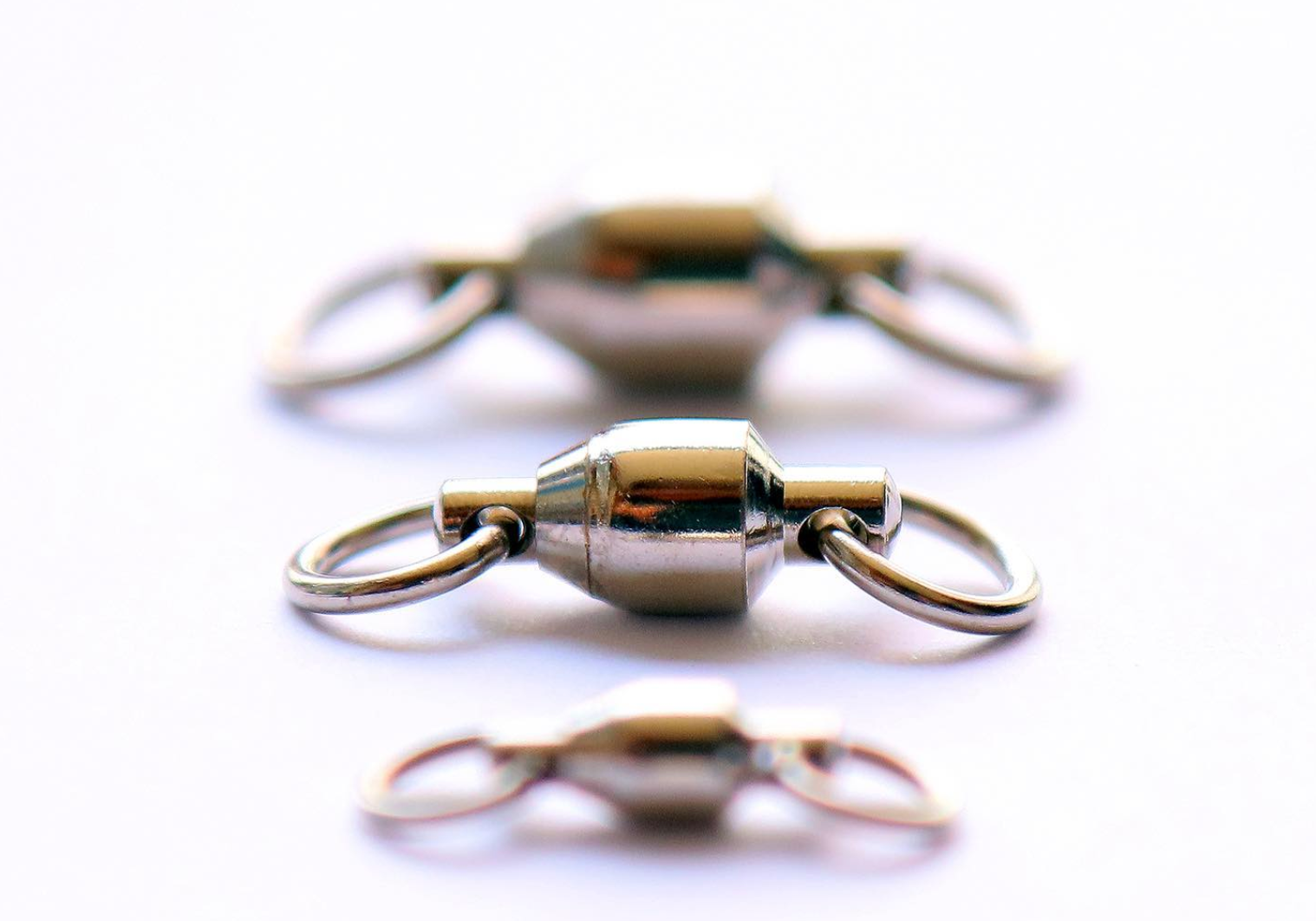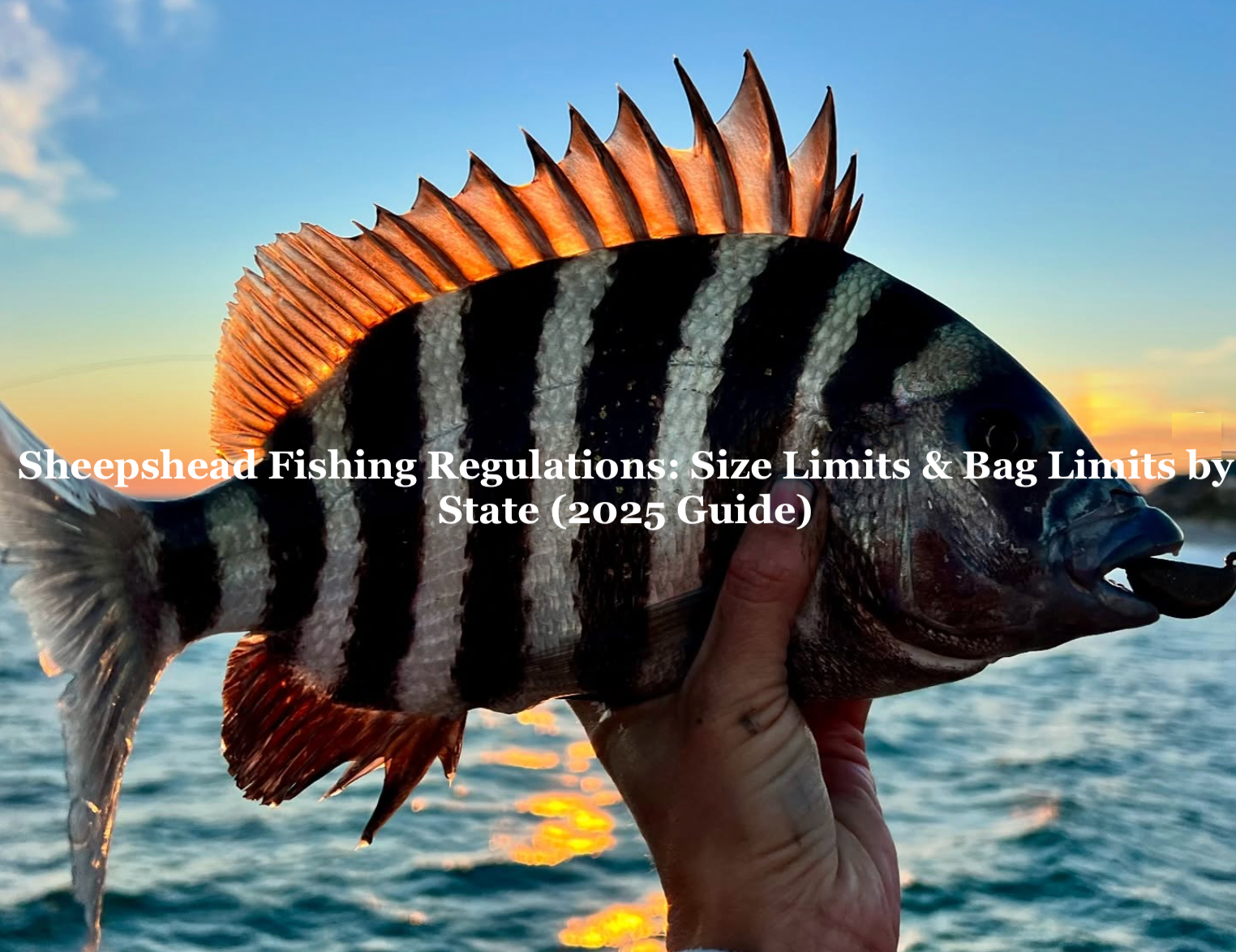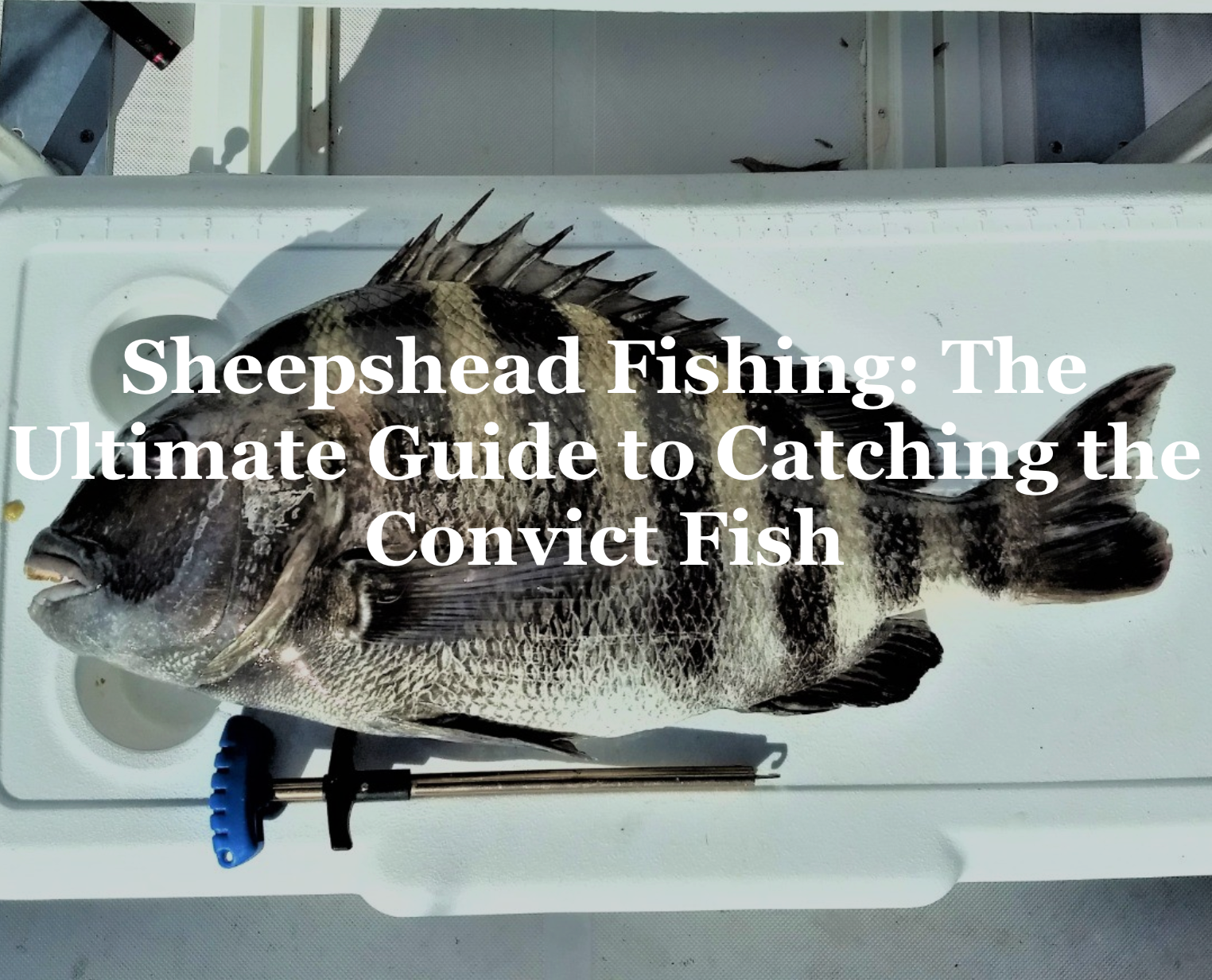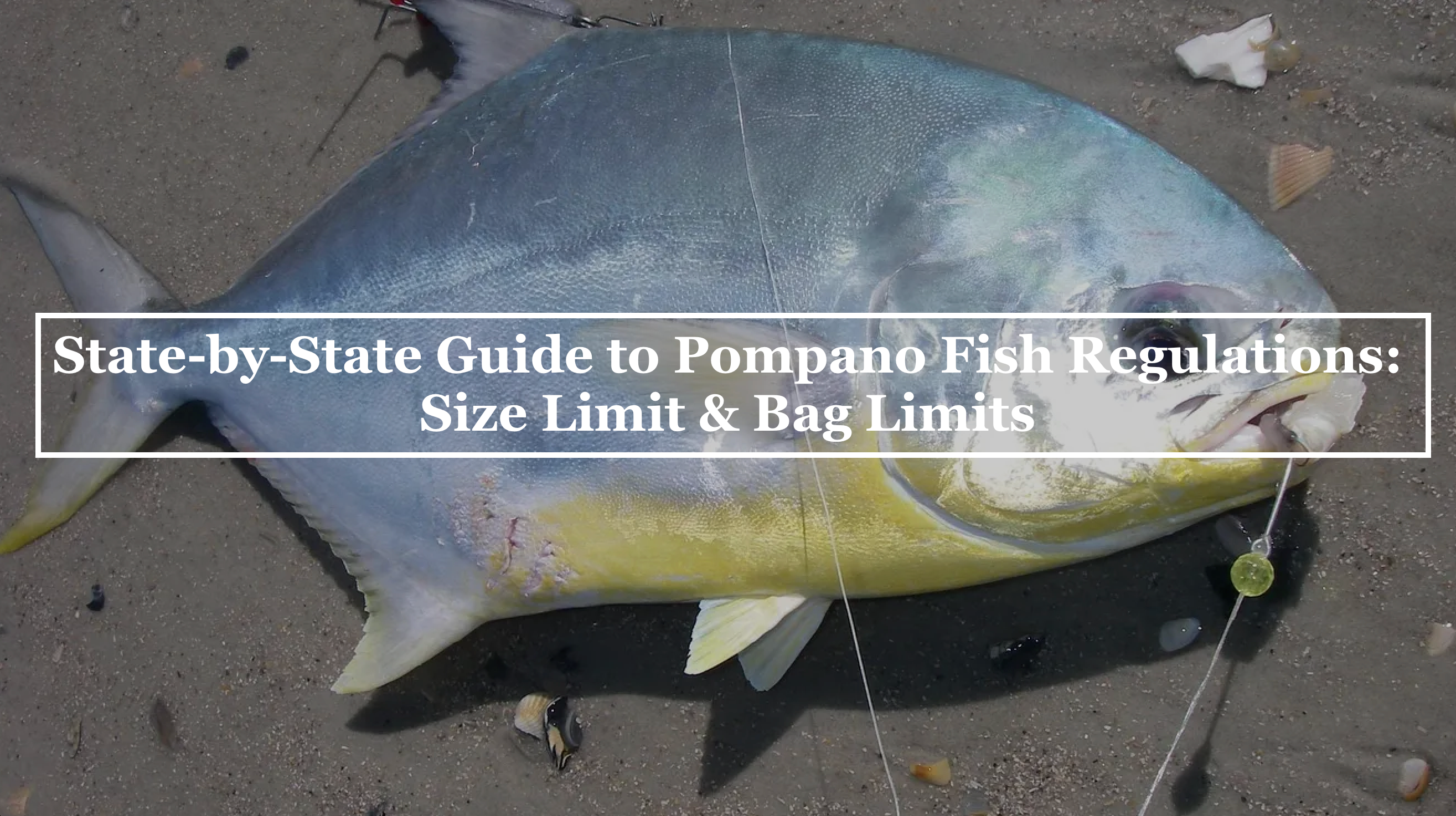Fishing swivels are essential tackle components that every angler should understand to improve their fishing success. Whether you're a beginner or a seasoned pro, choosing the right fishing swivel can prevent line twists, enhance lure performance, and increase your catch rate. In this comprehensive guide, we'll dive into the world of fishing swivels, exploring their sizes, types, and practical applications to help you fish smarter and more effectively.
What Are Fishing Swivels?

Fishing swivels are small, mechanical devices that connect your fishing line to lures, hooks, or weights, allowing free rotation to prevent line twisting. They act as a pivot point, reducing line stress and tangles caused by spinning lures or bait movement. Swivels are critical for maintaining line integrity and improving presentation in various fishing scenarios, from freshwater to saltwater.
Why Use Fishing Swivels?
-
Prevent Line Twist: Spinning lures or baitfish can twist your line, weakening it and causing tangles. Swivels allow rotation to keep the line straight.
-
Enhance Lure Action: Swivels provide freedom of movement, ensuring lures swim naturally to attract fish.
-
Increase Durability: By reducing line stress, swivels extend the life of your fishing line.
-
Versatility: Swivels are used in multiple rigs, such as Carolina rigs, drop shots, and trolling setups.
Types of Fishing Swivels
Understanding the different types of fishing swivels is key to selecting the right one for your fishing needs. Here’s a breakdown of the most common types:
1. Barrel Swivels

-
Description: The most basic and affordable swivel, featuring two rotating eyelets connected by a barrel-shaped body.
-
Best For: General-purpose fishing, including freshwater and light saltwater applications.
-
Pros: Inexpensive, widely available, reliable for basic setups.
-
Cons: Bulkier than other swivels, less effective for high-speed retrieves.
2. Ball Bearing Swivels
-
Description: High-performance swivels with internal ball bearings for smooth rotation under heavy loads.
-
Best For: Trolling, big game fishing, and saltwater species like tuna or marlin.
-
Pros: Superior strength, smooth rotation, ideal for heavy-duty applications.
-
Cons: More expensive than barrel swivels.
3. Snap Swivels

-
Description: Combines a barrel or ball bearing swivel with a snap clip for quick lure or leader changes.
-
Best For: Anglers who frequently switch lures or fish in dynamic conditions.
-
Pros: Convenient, reduces knot-tying time, versatile.
-
Cons: The snap can weaken under extreme pressure if not high-quality.
4. Crane Swivels
-
Description: Compact swivels with a unique design for reduced water resistance and smooth rotation.
-
Best For: Fly fishing, finesse fishing, and ultralight tackle.
-
Pros: Small profile, excellent for delicate presentations.
-
Cons: Limited strength for heavy fish.
5. Three-Way Swivels

- Description: Features three eyelets for connecting multiple lines or components, often used in complex rigs.
-
Best For: Surf fishing, bottom fishing, and multi-hook setups.
-
Pros: Allows versatile rig configurations.
-
Cons: Can be bulky and attract unwanted attention from fish.
Fishing Swivel Sizes: How to Choose

Fishing swivel sizes are denoted by numbers (e.g., #10, #8, #4, 1/0), with smaller numbers indicating larger swivels. The right size depends on your target species, line strength, and fishing conditions. Here’s a guide to help you choose:
Fishing Swivel Sizes and Pound Ratings
|
Swivel Size |
Pound Test Range |
Best For |
|---|---|---|
|
#10 - #8 |
10-20 lb |
Ultralight fishing, panfish, small trout |
|
#6 - #4 |
20-40 lb |
Bass, walleye, inshore saltwater species |
|
#2 - #1 |
40-80 lb |
Larger freshwater fish, medium saltwater species |
|
1/0 - 3/0 |
80-150 lb |
Big game fish, offshore trolling |
Tips for Choosing Swivel Size
-
Match Line Strength: Select a swivel with a pound test rating equal to or greater than your fishing line.
-
Consider Lure Weight: Heavier lures or weights require larger, stronger swivels.
-
Factor in Species: Small swivels work for finesse fishing, while big game fish demand heavy-duty options.
How to Use Fishing Swivels

1. Basic Swivel Setup (For Spinning Lures)
-
Step 1: Tie your main line to one eye of a barrel or snap swivel using a Palomar or Improved Clinch knot.
-
Step 2: Attach a leader (6-12 inches) to the other eye, then tie your lure to the leader.
-
Step 3: Cast and retrieve, letting the swivel prevent line twist as the lure spins.
2. Carolina Rig (For Bottom Fishing)
-
Step 1: Slide a bullet weight onto your main line, followed by a bead.
-
Step 2: Tie a barrel swivel to the main line.
-
Step 3: Attach a 12-24 inch leader to the swivel, then tie a hook with bait.
-
Step 4: Cast and drag along the bottom, letting the swivel keep the rig tangle-free.
3. Three-Way Rig (For Surf or Trolling)
-
Step 1: Tie your main line to one eye of a three-way swivel.
-
Step 2: Attach a leader with a sinker to the second eye.
-
Step 3: Tie a leader with a hook or lure to the third eye.
-
Step 4: Cast or troll, using the swivel to maintain separation between components.
How to Tie a Swivel on a Fishing Line

To tie a swivel on a fishing line, thread the line through the swivel’s eye, pulling 6 inches through. Double back the tag end, forming a loop. Twist the loop 5-7 times for tight coils. Next, pass the tag end through the loop, moisten, and pull the main line to tighten. Trim excess line. This knot prevents twists, enhancing your fishing setup.
Best Practices for Using a Fishing Swivel

Choose Quality Swivels
Selecting high-quality swivels is crucial for reliable performance. Opt for corrosion-resistant materials like stainless steel or brass, especially for saltwater fishing. These materials prevent rust and ensure durability in harsh conditions. Investing in trusted brands guarantees smooth rotation and strength, enhancing your fishing setup’s longevity and effectiveness across various environments.
Inspect Regularly
Regularly checking your swivels prevents unexpected failures. Before each trip, examine swivels for wear, corrosion, or debris that could impede rotation. A compromised swivel may cause line twists or break under pressure. Replace any damaged ones to maintain optimal performance, ensuring your fishing rig remains dependable when battling fish.
Use Appropriate Knots
Tying strong knots is essential for secure swivel connections. Use reliable knots like the Palomar, Uni, or Improved Clinch to attach swivels to your line. These knots withstand heavy loads and prevent slippage. Practice knot-tying to ensure consistency, as a well-tied knot maximizes the swivel’s strength and keeps your setup intact during intense fights.
Avoid Overloading
Never use a swivel with a lower pound-test rating than your line or target fish. Overloading a lightweight swivel, like a small crane swivel, with heavy species risks breakage. Match the swivel’s strength to your line and fish size. This ensures the swivel can handle the stress, maintaining a reliable connection throughout your fishing session.
Minimize Visibility
In clear water, reduce swivel visibility to avoid spooking fish. Choose smaller swivels or those with black or nickel finishes for subtle presentations. Bulky or shiny swivels can deter cautious fish in transparent conditions. Selecting low-profile options enhances your chances of success, keeping your rig stealthy and effective in finesse fishing scenarios.
Common Mistakes to Avoid with Fishing Swivels

Choosing the Wrong Swivel Size
Selecting an improperly sized swivel can ruin your fishing trip. A swivel too small, like a lightweight VMC for heavy saltwater fish, may snap under pressure. Conversely, an oversized swivel can disrupt lure action, making it less enticing. Always match the swivel’s pound-test rating to your line and target species to ensure strength and seamless performance across various fishing conditions.
Skipping Swivels with Spinning Lures
Omitting a swivel when using spinning lures is a costly mistake. Without a swivel, like those from Berkley or Spro, the lure’s rotation twists your line, reducing casting distance and weakening the line over time. This can lead to tangles or lost fish. Adding a properly sized swivel prevents these issues, maintaining line integrity and improving overall fishing efficiency.
Tying Poor Knots
Weak or improper knots can cause swivels to slip or fail, resulting in lost fish or tackle. A poorly tied knot, unlike a secure improved clinch, may not hold under stress, especially with heavy loads. Practice strong knots and test them before fishing to ensure your swivel, whether Mustad or Owner, stays firmly attached, providing reliability during critical moments on the water.
Ignoring Fishing Conditions
Failing to consider fishing conditions can reduce swivel effectiveness. In saltwater, non-corrosion-resistant swivels corrode quickly, unlike stainless steel options from Seaworx. In clear water, bulky swivels spook fish, while compact crane swivels work better. Always choose swivels suited to the environment—corrosion-resistant for saltwater and subtle for clear water—to maximize durability and success.
Top Fishing Swivel Brands

When shopping for fishing swivels, consider these trusted brands known for quality and reliability:
-
Spro: Premium ball bearing swivels excel in heavy-duty applications, offering unmatched strength for saltwater and big game fishing.
-
Mustad: Durable barrel and snap swivels suit all fishing types, ensuring reliability in both freshwater and saltwater environments.
-
Owner: High-strength swivels, built for big game and saltwater, deliver corrosion resistance and smooth performance.
-
VMC: Affordable, corrosion-resistant swivels perform well for freshwater and inshore fishing, balancing quality and cost.
-
Berkley: Versatile snap swivels allow quick lure changes, ideal for anglers seeking convenience across various setups.
-
Seaworx: Known for robust stainless steel swivels, Seaworx offers smooth-rotation designs, perfect for demanding saltwater conditions and inshore species.
Frequently Asked Questions (FAQs)
1. Do You Need a Swivel for Fishing?
While not always essential, a swivel is highly recommended for fishing to prevent line twist caused by spinning lures or bait, especially with brands like Spro or Berkley. Swivels enhance efficiency in setups like trolling or dynamic lure fishing, and snap swivels allow quick lure changes. For complex rigs, such as bottom fishing, three-way swivels are vital. Using a properly sized swivel improves performance and reduces line wear.
2. Can I Use the Same Swivel for Freshwater and Saltwater?
3. How Do I Know If My Swivel Is Too Small?
4. How to Use a Snap Swivel for Fishing
To use a snap swivel, tie it to your main line using a strong knot. Attach your lure or leader to the snap clip for quick changes, ideal for dynamic fishing conditions. Ensure the swivel’s strength matches your line and target species. This setup enhances efficiency, allowing anglers to adapt swiftly while maintaining a tangle-free line.
5. Where to Buy Fishing Swivels?
Anglers can find fishing swivels at various reliable sources. Local tackle shops offer personalized advice and quality brands like Spro or Mustad. Big retailers like Bass Pro Shops and Cabela’s stock a wide range, from budget-friendly VMC to premium Owner swivels. Online platforms like Amazon and FishUSA provide convenience, competitive prices, and customer reviews. Specialty sites like TackleDirect cater to anglers with extensive selections for all fishing needs.
Conclusion
Fishing swivels are small but mighty tools that can make or break your fishing experience. By understanding the types, sizes, and proper usage of swivels, you’ll be better equipped to tackle any fishing challenge, from landing bass in a lake to battling marlin offshore. Invest in quality swivels, match them to your setup, and follow best practices to boost your success on the water.
Ready to upgrade your tackle box? Explore our selection of top-rated fishing swivels at [Your Brand Name] and start fishing like a pro today!






Share:
Kahle Hooks: Guide to Mastering This Versatile Fishing Hook
Live Bait Fishing Hooks - Techniques & Brands for Best Hook Success